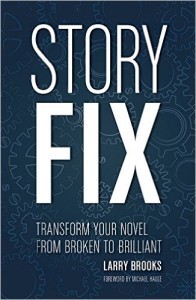Tips to Create Emotional Connection with Your Readers
Take a moment to think about the best book you have ever read. Why were you so hooked on it? You couldn’t leave it for days… you sympathized with every emotion the main characters went through. You laughed, cried, and suffered with them. That’s what distinguishes a brilliant author from a mediocre one – that author builds an emotional connection with the readers.
Don’t you want to achieve the same influence over your readers? You want to hypnotize them and make them beg for more. There are certain aspects you can pay attention to.
Develop strong characters
You may think of great situations and dialogues, but if the characters are not well-developed, you won’t leave a powerful impression. Let’s take Guillaume Musso as an example. He is a popular novelist, who mainly attracts people that want a quick read. Yes, he has some intriguing ideas, but do you remember his characters a year after reading the book? Hardly. They are sympathetic, but they don’t make you emotional.
Let’s learn from this example: your characters have to be empathetic. The reader needs to understand them. Real life can be your greatest inspiration. Dostoevsky, for example, got inspired by suicides and criminal cases. He analyzed the background and the reasons that brought people to such act. As a result, you can understand why the characters in his books did what they did. Nabokov was another masterful writer, who somehow managed to evoke compassion for a person we would usually judge.
A sympathetic character, on the other hand, is someone we like, but we don’t get emotionally involved with. For example, Pablo from Hesse’s Steppenwolf is a sympathetic character, but Harry Haller and Hermine engage the reader on a deeper level. The conclusion is: you need both types of characters in your story.
The story is important too!
You developed really powerful characters with burdening emotional background? You need to put them in an unusual situation that will hook the reader. Clearly, you understand the importance of the plot. The last thing you would like to do is describe people’s family history and leave the reader disappointed when he realizes that nothing important happens in your book.
When you arrange the characters in a particular situation, make sure their reactions are adequate to the personalities you developed. Make the reader wonder: “What made her choose x over y? Did she make the right choice?” When the readers start asking questions, you’ll have them hooked.
Make it real
Let’s take Guillaume Musso as an example again. In The Girl on Paper, he brings a character from a writer’s novels to life. In the moment when she appears naked in his house and you realize that she is an imaginary personality, you realize: “okay, this is a book that won’t teach me a valuable lesson.” In fact, you can learn something from it: you should always, always make your characters realistic, even when you are writing a fantasy novel!
Even when people want to escape their daily lives, they still thrive off of reality. We want to recognize pieces of ourselves in the literature we read. When we can imagine a certain character as a part of our lives, he/she starts evoking rage, joy, happiness and despair. Do you remember Andrei Bolkonsky from War and Peace? Enough said.
You Found Your Calling? Now Discover the Purpose!
The real purpose of a writer is to make readers feel. You want to make them angry, ecstatic, disappointed and hopeful with a single book. You want them to reconsider their values and get out of the comfort zone. A reader can achieve catharsis if he develops an emotional connection with the characters and plot you serve.
Linda Craig has a master’s degree in literature. She is currently working at assignment writing service Assignmentmasters as a freelance blogger.
*****
Larry is currently away on an anniversary vacation with his wife. Until then Storyfix.com will feature several much appreciated guest posts, and a couple of surprise pre-scheduled visits by Larry, as well.
Larry’s new writing book, “Story Fix: Transform Your Novel From Broken To Brilliant,” has just been released and is available on all online venues, as well as most bookstores. If they don’t have it in stock yet, ask them to reserve a copy for you.
The post Tips to Create Emotional Connection with Your Readers appeared first on Storyfix.com.




